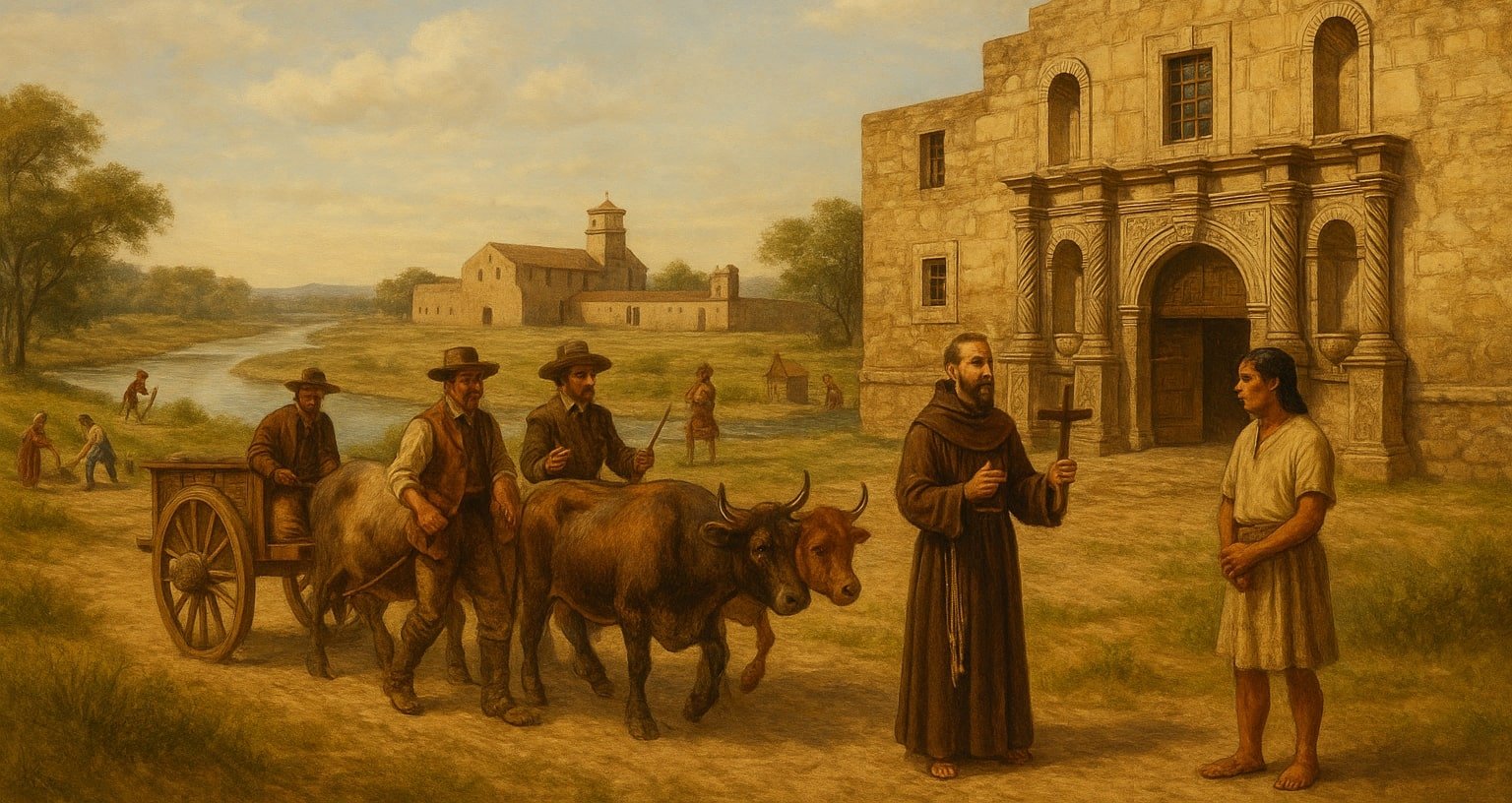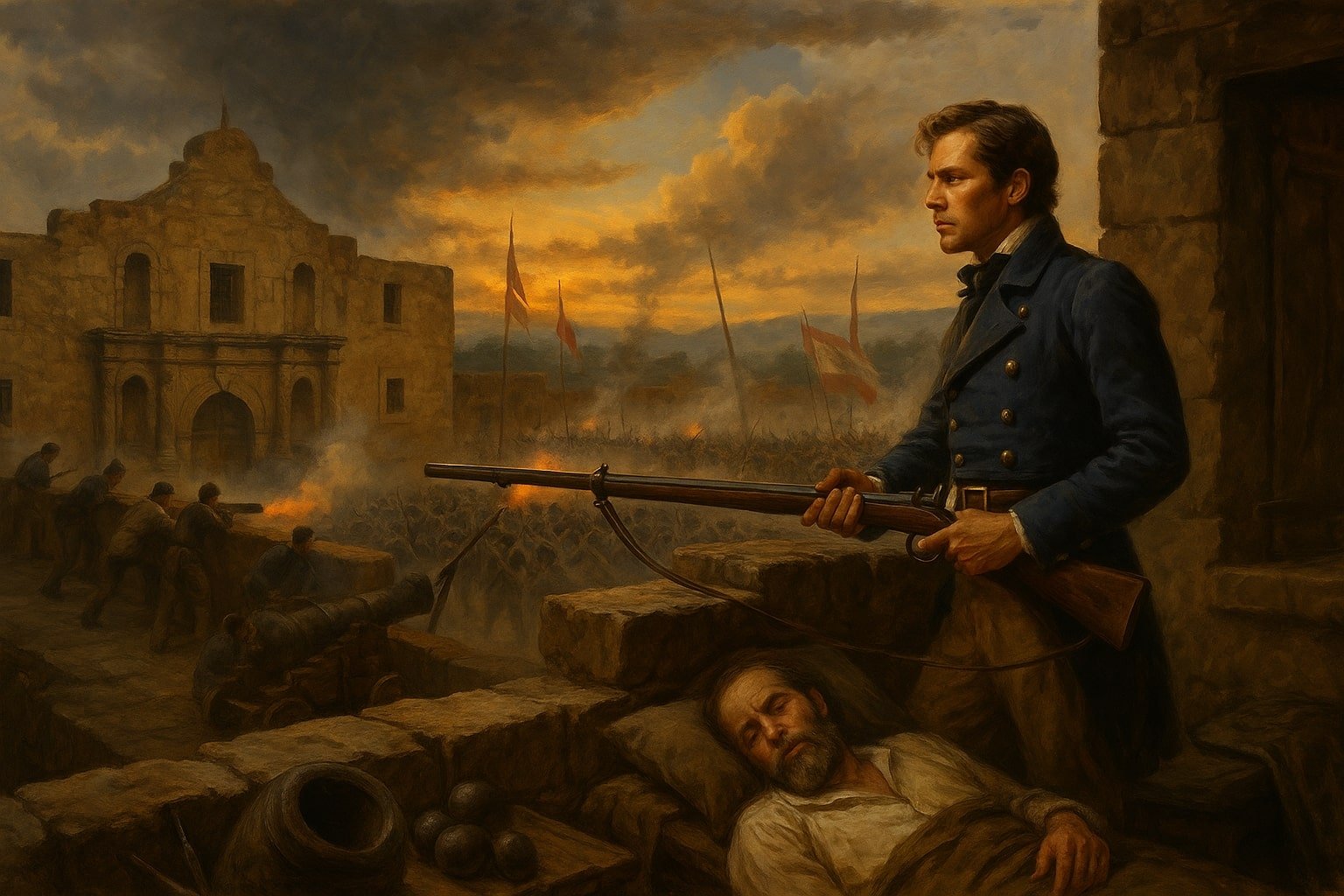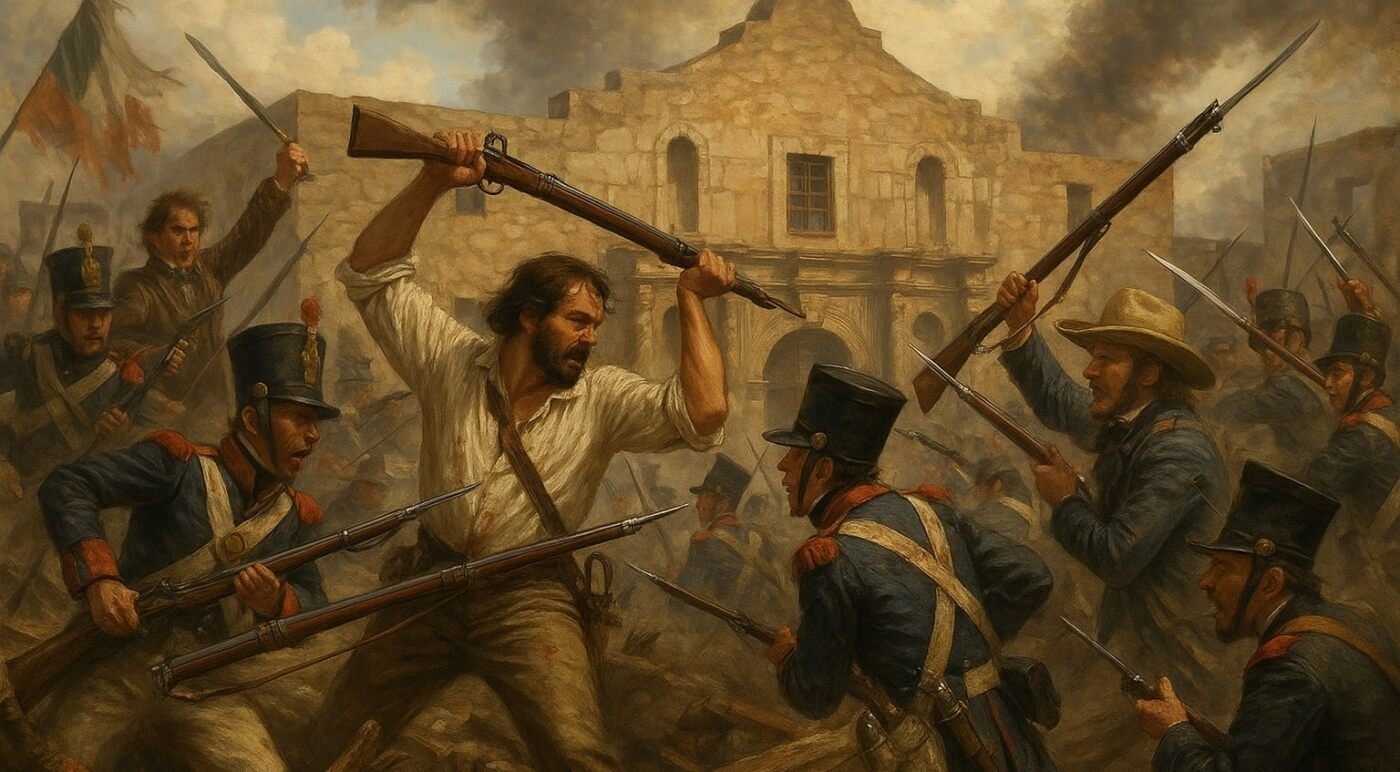The Battle of the Alamo is one of the most iconic events in American and Texas history. Fought between February 23 and March 6, 1836, it was a pivotal moment in the Texas Revolution. This battle not only symbolizes resistance and sacrifice but also played a crucial role in the fight for Texas independence from Mexico.
Early History of the Alamo
Before it became a battleground in the Texas Revolution, the Alamo had a long and fascinating history.
The Alamo’s origins trace back to Mission San Antonio de Valero, established in 1718 by Spanish settlers near the San Antonio River. Named after St. Anthony of Padua, it was one of several missions built to convert Native Americans to Christianity. Alongside the mission, the Spanish founded the Presidio San Antonio de Béxar, a military garrison that grew into the settlement of San Fernando de Béxar (later San Antonio). For over 70 years, the mission served as a religious and agricultural center until 1793, when Spanish authorities secularized it and redistributed its lands to local residents.

By the early 1800s, the abandoned mission chapel was repurposed as a military fort. Spanish soldiers stationed there named it “El Alamo”—after the surrounding cottonwood trees (álamo in Spanish) and in honor of their hometown, Alamo de Parras, Mexico. After Mexico’s independence from Spain, the Alamo continued as a military post, switching hands between Spanish rebel and Mexican forces.
In 1821, Stephen F. Austin brought 300 U.S. families to Texas under a Spanish land grant. Over the next decade, Anglo-American immigration surged, leading to tensions with the Mexican government. By the 1830s, disputes over states’ rights, slavery, and centralist policies under Santa Anna sparked rebellion.
In October 1835, following years of rising tensions, many settlers in Texas—known as Texians—rose up against Mexico after Antonio López de Santa Anna established a dictatorship.

By December, a group of Texian volunteers led by George Collinsworth and Benjamin Milam defeated the Mexican garrison at the Alamo and took control of the fort, gaining control over San Antonio.
By mid-February 1836, Colonel James Bowie and Lieutenant Colonel William B. Travis had assumed joint command of the Texian forces stationed in San Antonio.
Despite objections from Sam Houston—the recently appointed commander in chief of the Texian army—who urged that the city be abandoned due to a lack of sufficient manpower, the defenders at the Alamo, led by Bowie and Travis, chose to stand their ground. Determined to hold the fort at all costs, their numbers, even after receiving reinforcements, never exceeded 200. Among them was the legendary frontiersman and former Tennessee congressman Davy Crockett, who had arrived earlier that month.
The Siege Begins
On February 23, Santa Anna’s army of approximately 1,800–6,000 soldiers arrived in San Antonio and immediately demanded surrender. Travis responded with a cannon shot, signaling defiance.
Over the next 12 days, Mexican forces encircled the Alamo, bombarding it with artillery. Travis sent out multiple appeals for reinforcements, famously writing in his February 24 letter: “I shall never surrender or retreat… Victory or Death!”. Inside the Alamo, supplies dwindled and morale wavered. Bowie, suffering from illness, relinquished command to Travis. Despite the dire situation, the defenders prepared for a final stand.

The Final Assault
Before dawn on March 6, Santa Anna launched a full-scale assault. Around 5:30 AM, Mexican troops stormed the Alamo from multiple sides. The Texians and Tejanos fought fiercely, repelling the first two waves with rifle fire and cannon blasts. However, the third wave overwhelmed the defenses.
The battle turned into brutal hand-to-hand combat. Nearly all defenders, including Travis, Bowie, and Crockett, were killed.


